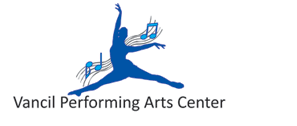|
If most dance studios seem to have qualified, friendly teachers, experience teaching children and a big show at the end of the year, aren't they all pretty much the same? Does it really matter which place you decide to enroll at? Yes. There are 4 main things that can make a huge difference in the quality of instruction your child receives, the amount of extra work and hassles the parents must deal with and the overall enjoyment and satisfaction of being involved with a dance program. Here are 4 things that every parent should consider before deciding on a dance studio for their child.
Dance is a very physical activity that requires a lot of jumping, which can put stress on bones and joints. Most dance footwear does not provide any cushioning or support, so the shock of dance movement can place a lot of pressure on the knees and back of a dancer. The best way to prevent against potential injury is by choosing a studio with a professional "floating floor." A floating floor is a dance floor that rests on a system of high-density foam, to absorb the shock of jumping. A high-density foam base is superior to a "sprung" floor, which usually consists of a wood structure built on the regular floor.
The top layer of the dance floor is also an important factor. A vinyl composite "marley" floor is accepted worldwide as the best surface layer for recreational to professional dance. Facilities such as the Royal Winnipeg Ballet, the Royal Academy of Dance in London, England, and Riverdance - The Touring Show, all use marley floors as their dance surface. A marley floor allows dancers to slide, with a degree of "controlled slip," but is not slippery so there is less risk of slips and falls. Very few studios use professional marley floors because of the expense involved, and usually opt for a regular floor tile for a studio floor.
All of our studio locations have floating floors that have over 700 high density foam blocks under the floor surface and a marley top surface. Our special floors help reduce the risk of injuries and allow students to dance longer without getting tired.
If the dance class has fewer students in it each child will receive more personalized attention, learn more and have more fun. With younger students it is easier for a teacher to maintain control over the class and make sure each student understands the concepts and instructions. Our smaller class sizes make sure that no fundamental concepts are being missed. A smaller class size also allows our teachers to ensure that students are not developing bad habits or improper technique. Our studio limits all of our class sizes.
Most studios put on a year end show in a professional theatre. Students that perform in the show must have a costume for their dance number. Some studios may hand their students their costumes,stuff in a bag. At our studio the student will receive their costumes hung up in a studio garment bag. We split our recitals into two separate days so the length of the recital is reasonable. Organization is the key to our recitals. Most studios also require parents to purchase tickets for the recital performance night. We give each family two free tickets if they perform in both recitals.
In many studios the teacher or the studio owner conducts classes and does the administration. By trying to do two jobs at once, the class may suffer as the teacher has to use class time for customer service issues, or the studio may have no customer service available if the teacher is in a class. To have a good experience it is important to choose a studio that can assist you with details like costumes or schedules, even if a teacher is occupied in a class. Our studios have office staff on hand during all regular class times, so you can get immediate assistance.
We have viewing Monitors for all three dance rooms. Watch your child in his or her dance classes from the convenience of our waiting rooms.
We are the Number One Performance Dance Studio in the Tri-States. We have many performance opportunities locally and throughout the country. To name a few recent ones, New York City Macy's Thanksgiving Day Parade, The Indianapolis 500 Parade, The Pearl Harbor Parade in Honolulu, and The Orange Bowl Half Time Show. We are making sure our students have those "Once in a Lifetime" experiences.
We offer lots of opportunities throughout the year to expand a student's skills through intensives, summer sessions and conventions.
|
